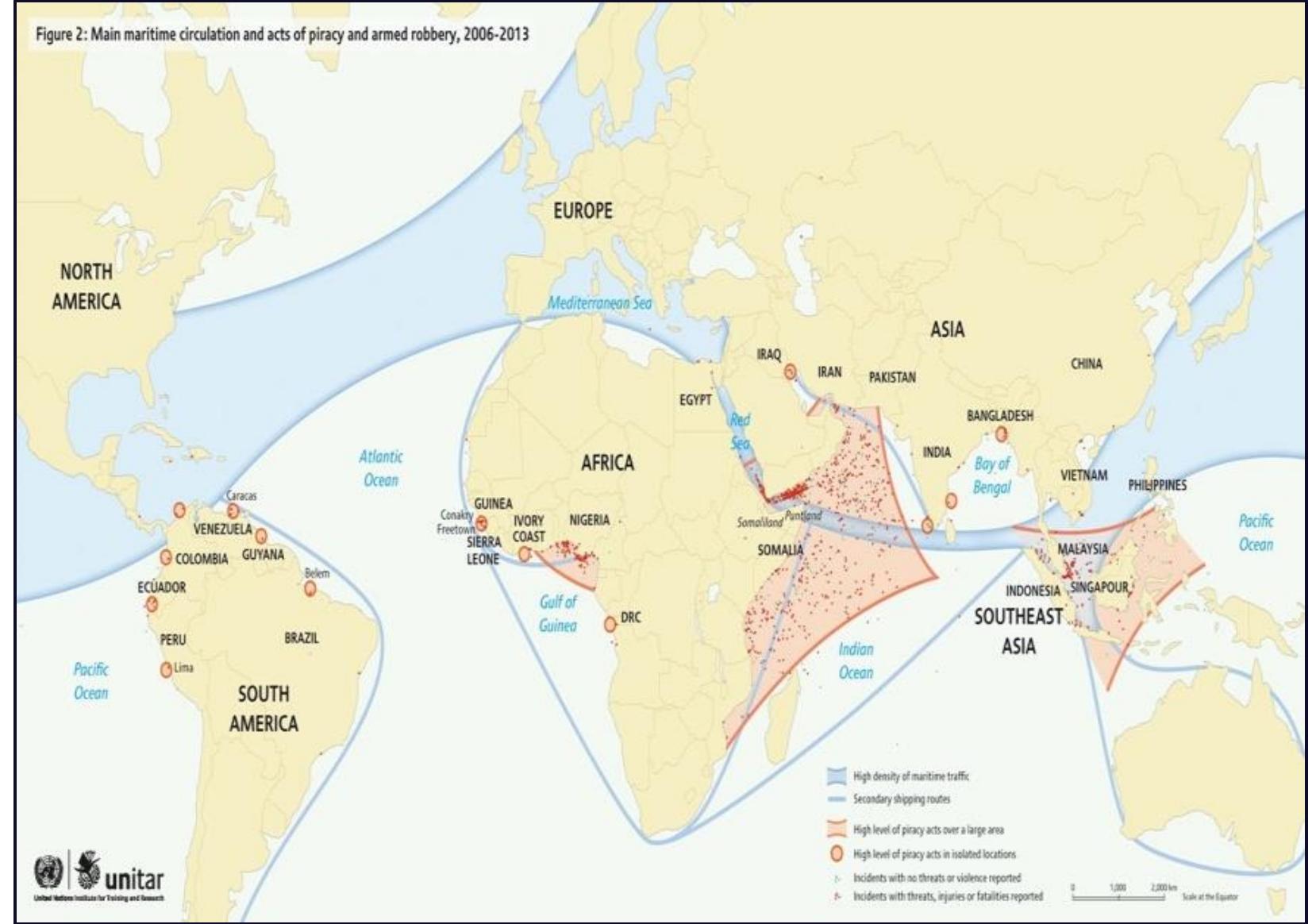INDIAN OCEAN GEOPOLITICS (original) (raw)
2020, INDIAN OCEAN GEOPOLITICS
Abstract
Relevance of the IOR is four fold, First historical relevance. The Indian Ocean has been a zone of human interaction for several millennia, boasting a 1,500 years history of active high seas trade -much before the arrival of Europeans in 1498. Adequate proofs exist to establish that the seafaring and maritime trade across these waters supplemented with facts of human migration, spread of religion, visit of scholars and many more since as early as pre-historic era. Second, geographical relevance, it is said that in geopolitics, geography plays a vital role in influencing peace and security in the region. Indian Ocean is the third largest Ocean having an area of 68.56 million sq km and covers about 20% of the earth’s surface. It is nearly 10,000 km wide at the southern tips of Africa and Australia and extends nearly 13,500 km from the Persian Gulf to Antarctica. It is physically the most complex, walled ocean bounded on three sides by land. Indian Ocean is not ‘open-ended’ like the Pacific or Atlantic. IOR stretches from the Suez Canal to the Strait of Malacca with its entry and exit constrained by choke points. Third, economic relevance, the IOR has 40 per cent of the world's energy reserves, 65 per cent of strategic raw material reserves and the largest producers of rubber, tea, spices and jute. It is also a region of extreme economic diversity and its natural resources add to its strategic significance. More than 65% of the world’s Uranium and oil reserves exist on the ocean bed. Last, the Strategic Relevance, Strategically, Indian Ocean is the most important water body of the world where global struggles will play out in the 21st century. Indian Ocean is the focal point of all the major shipping routes of the world. Major sea routes passing through IOR connecting the Middle East, Africa, Europe and the Americas. The IOR is also the lifeline of international trade and economy, with half of the global cargo trade, two third of the energy supplies and one third of the bulk cargo trade passing through the Indian Ocean. Unlike the Pacific and Atlantic, 80% of the trade pattern is ‘extra-regional’. About one Lakh ships pass through these waters in a year. According to an estimate, Indian Ocean shipping comprises the highest tonnage of goods in the world. Therefore, IOR needs effective maritime governance and maritime domain awareness by all littoral status. It needs soft power geopolitics practices together with regional integration – strategic alliance. These can be achieved bridging through dialogues. Prospective military Alliances, Military Training Assistance, Military Diplomatic Exchanges and Defence industry and Technological Transfer are the realistic and appropriate defence integration that can be achieved for 18 unity of effort for joint security mechanism. Integrated intelligence Sharing and Integrated Space and Cyber Security Organisations are the modern measures that can support the joint security strategies in the region. This paves the way to implement common cause missions for maintaining peace and order in the IOR.
Figures (9)
The Strategic environment of the Indian Ocean region can be described in six words: strategic competition, strategic alliances and strategic dilemma which are the driving factors for the conflicts in the
maintenance of their sphere of influence through the regional powers. Therefore, USA has a clear interest in the freedom of navigation, conflict free IOR and to economies like Pakistan, Bangladesh, Indonesia to be within the top in according to the IMF analysi trillion, South Korea, Germany, Japan and the UK’s GDP between US$ 4-7 trillion. Other emerging
Figure 3: Reviving the Silk Road countries in Central Asia, Europe and Indo-Pacific littoral countries (Chourdry M, 2017).
Figure 4 : Major, Non Major and porposed CEZ under Sagaramala Initiation Sourse: https://satyavijayi.com/modi-government-execute Asia with Africa by using Japanese technology and Indian influence in that region. (AAGC), an economic cooperation agreement between the governments of India and Japan to connec
* Where exact dates/months were undecided, only years have been mentioned.
‘igure 5: Threat of Non - Traditional Threats in the OF Source: UNITAR-UNOSAT modus operands as money making adventures.
Human Smuggling is a major issue in the IOR where 65.3 million individuals forcibly displaced

Loading Preview
Sorry, preview is currently unavailable. You can download the paper by clicking the button above.








